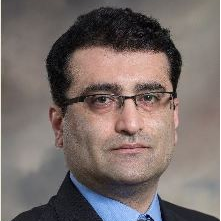Opto/Photoacoustic for Imaging, Material Characterization and Nondestructive Evaluation
A special issue of Acoustics (ISSN 2624-599X).
Deadline for manuscript submissions: closed (31 August 2022) | Viewed by 2851
Special Issue Editor
Interests: ultrasound; acoustic, sound; material testing; acoustic emission; distributed acoustic sensing; noise; vibration; nonlinear; numerical; piezo
Special Issues, Collections and Topics in MDPI journals
Special Issue Information
Dear Colleagues,
The Special Issue of Acoustics on “Opto/Photoacoustics for Imaging, Material Characterization and Nondestructive Evaluation” focuses on the broad topic of “Opto/Photoacoustics” and includes novel research on the use of Opto/Photoacoustic methods, instrumentation and techniques for imaging, material characterization and nondestructive testing and evaluation.
Theoretical and empirical articles on the application of novel Opto/Photoacoustic techniques in characterization, simulation, signal/data processing, application of artificial intelligence (AI), machine learning (ML) and calibration with applications to for imaging, material characterization and nondestructive testing and evaluation are welcome.
Contributions focusing on high-speed three-dimensional imaging, multispectral optoacoustic tomography (MSOT) and in situ process monitoring applications in today’s complex world, novel measurement techniques, and other types of in situ/ex situ monitoring and imaging are encouraged.
Dr. Hossein Taheri
Guest Editor
Manuscript Submission Information
Manuscripts should be submitted online at www.mdpi.com by registering and logging in to this website. Once you are registered, click here to go to the submission form. Manuscripts can be submitted until the deadline. All submissions that pass pre-check are peer-reviewed. Accepted papers will be published continuously in the journal (as soon as accepted) and will be listed together on the special issue website. Research articles, review articles as well as short communications are invited. For planned papers, a title and short abstract (about 100 words) can be sent to the Editorial Office for announcement on this website.
Submitted manuscripts should not have been published previously, nor be under consideration for publication elsewhere (except conference proceedings papers). All manuscripts are thoroughly refereed through a single-blind peer-review process. A guide for authors and other relevant information for submission of manuscripts is available on the Instructions for Authors page. Acoustics is an international peer-reviewed open access quarterly journal published by MDPI.
Please visit the Instructions for Authors page before submitting a manuscript. The Article Processing Charge (APC) for publication in this open access journal is 1600 CHF (Swiss Francs). Submitted papers should be well formatted and use good English. Authors may use MDPI's English editing service prior to publication or during author revisions.
Keywords
- optoacoustic
- photoacoustic
- imaging
- in situ Monitoring





